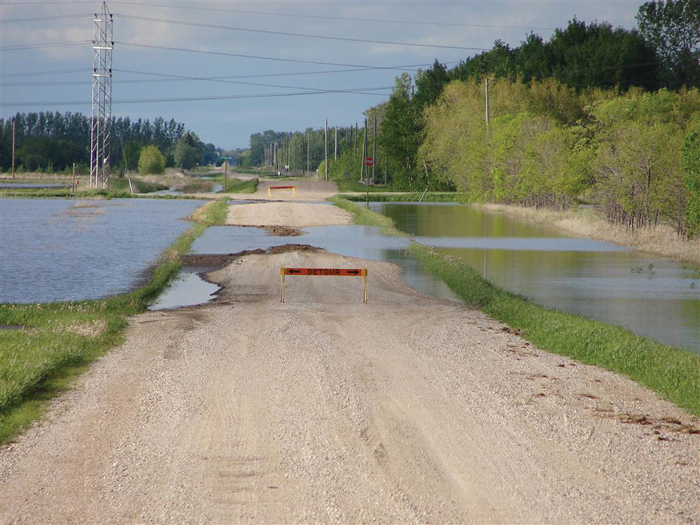There are some muddy politics swirling around Manitoba’s flood waters.
On July 30, Manitoba’s opposition Tories called for a moratorium on drainage in both Saskatchewan and Manitoba, as part of a Progressive Conservative plan to reduce flooding.
Tory water critic, Shannon Martin said he had asked “the province to engage our counterparts in Saskatchewan to have a moratorium on the issuance of new drainage until such time that a more co-ordinated approach is taken.”
The MLA for Morris also said that it would be unfair to ask our neighbours to address drainage without making changes here at home.
Read Also

Mazergroup’s Bob Mazer dies
Mazergroup’s Bob Mazer, who helped grow his family’s company into a string of farm equipment dealerships and the main dealer for New Holland machinery in Saskatchewan and Manitoba, died July 6 from cancer.
“We’d have to look at applying it here as well, obviously we can’t simply ask Saskatchewan to bear the burden,” he said.
But less than 24 hours later, Martin claimed he had “misspoke” on the issue.
In an email, he said that “the moratorium on all new drainage was exclusive to landowners in Saskatchewan.”
Martin wrote that “such a moratorium would allow affected properties downstream in Manitoba additional time to proceed with flood mitigation efforts without having to deal with uncontrolled waters from upstream.”
The suggestion of a moratorium in Manitoba took the president of Keystone Agricultural Producers (KAP) by surprise.
“There’s no way that KAP would ever support a complete moratorium on drainage,” said Doug Chorney. “We think the approach of sustainable drainage is a more practical solution, which means that you drain in a way that assists landowners who have water issues, while being mindful of the consequences downstream.”
The umbrella farm organization has also promoted water retention projects, and played an integral role in the development of a surface water management strategy recently released by the Manitoba government. The strategy will also see major changes made to how drainage is licensed in the province.
Martin’s comments came a day after Tory leader, Brian Pallister held a press conference to criticize what he said was a sluggish response by NDP government regarding additional outlets on both Lake Manitoba and Lake St. Martin.
- More from the Manitoba Co-operator: New outlets could begin operating prior to completion
Pallister had promoted the announcement a week earlier, promising that the PC caucus was “dotting i’s and crossing t’s” on a plan that would see the outlets finished in only three years.

However, while some time-saving options were put forward, no comprehensive strategy was presented.
“It’s been three years since the 2011 flood and the government is still looking at six outlet options. That is not action,” Pallister said.
Some media outlets have reported that it will take the province seven more years to complete additional outlet channels for Lake Manitoba and Lake St. Martin, which Pallister says is far too long.
But during an interview with the Manitoba Co-operator, Steve Ashton, Manitoba’s minister of emergency measures, and infrastructure and transportation said that figure had been misreported.
“This idea that somehow it was going to be seven years from today, that’s not what we’ve ever said, that is a misunderstanding because we’ve already started working on this,” Ashton said.
He added that construction of the new outlets could begin as early as 2016.
More recently, the minister questioned Pallister’s ability to comprehend the extent of preparation needed for a major flood mitigation project.
“We’ve had experience with the floodway expansion for example, and the stages you have to go through, designing it, budgeting for it, you’ve got to go through all the various approvals, then you actually have to construct it,” said Ashton. “Quite frankly, Mr. Pallister doesn’t have experience with major projects, he was the former emergency measures minister and he actually quit.”
Pallister left provincial politics to pursue federal ambitions a few months before the “flood of the century” hit in 1997.
The minister added that Pallister has also been offered private briefings on both the planned outlets and ongoing flooding, but has declined those offers.
Pallister has faced some criticism during this summer’s flooding for not being present in flood-affected communities, but he said that his low profile is the result of a desire to keep the emergency non-political.
“I’ve been present, I just haven’t been visible,” he said. “I have not tried to score political points during this flood or any other, nor will I… I’ve always resented politicians trying to grandstand.”



















